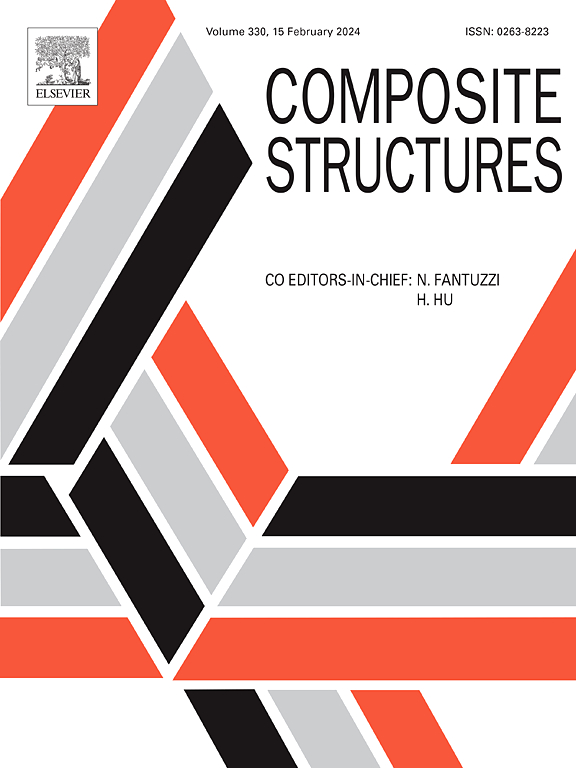Efficient genetic optimization strategy for high temperature broadband absorption/transmittance rasorber
IF 6.3
2区 材料科学
Q1 MATERIALS SCIENCE, COMPOSITES
引用次数: 0
Abstract
Frequency-selective-rasorber (FSR) radomes have demonstrated remarkable capabilities in transmitting and absorbing electromagnetic waves. However, with an increase in aircraft flight speeds, FSR radomes struggle to withstand the high-temperature environments generated during flights. Meanwhile, traditional high-temperature frequency-selective-surface (FSS) radomes will fail in stealth against multi-base station radar detection systems. To address these challenges, this paper presents the innovative development of a high-temperature resistant integrated casting quartz fiber matrix. A topological pattern and slit square ring pattern were integrated using an enhanced genetic algorithm, resulting in a transmittance above 70 % within the range of 1.67–2.19 GHz at a thickness of 4.6 mm; its absorptivity within the range of 9.25–18 GHz exceeded 90 %. Notably, the absorption bandwidth of 11 GHz (>80 %) and the passband bandwidth of 2.38 GHz (>50 %) at 700 °C were achieved, leading to the development of a thin FSR that integrates high-temperature resistance, absorption, and transmission. Consequently, this study creates avenues for the integration of military communication and stealth technology, presenting a promising application prospect for the development of new stealth radomes.
高温宽带吸收/透射光谱器的高效遗传优化策略
频率选择反射器(FSR)天线罩在发射和吸收电磁波方面表现出了卓越的能力。然而,随着飞机飞行速度的增加,FSR天线罩难以承受飞行过程中产生的高温环境。同时,传统的高温频率选择表面(FSS)天线罩在面对多基站雷达探测系统时将无法隐身。为了解决这些挑战,本文提出了一种耐高温集成铸造石英纤维基体的创新发展。利用改进的遗传算法将拓扑模式和狭缝方环模式整合在一起,在1.67 ~ 2.19 GHz范围内,厚度为4.6 mm,透射率在70%以上;其在9.25 ~ 18 GHz范围内的吸收率超过90%。值得注意的是,在700°C时实现了11 GHz (> 80%)的吸收带宽和2.38 GHz (> 50%)的通带带宽,从而开发了集耐高温、吸收和传输为一体的薄型FSR。因此,本研究为军事通信与隐身技术的融合开辟了途径,为新型隐身天线罩的开发提供了广阔的应用前景。
本文章由计算机程序翻译,如有差异,请以英文原文为准。
求助全文
约1分钟内获得全文
求助全文
来源期刊

Composite Structures
工程技术-材料科学:复合
CiteScore
12.00
自引率
12.70%
发文量
1246
审稿时长
78 days
期刊介绍:
The past few decades have seen outstanding advances in the use of composite materials in structural applications. There can be little doubt that, within engineering circles, composites have revolutionised traditional design concepts and made possible an unparalleled range of new and exciting possibilities as viable materials for construction. Composite Structures, an International Journal, disseminates knowledge between users, manufacturers, designers and researchers involved in structures or structural components manufactured using composite materials.
The journal publishes papers which contribute to knowledge in the use of composite materials in engineering structures. Papers deal with design, research and development studies, experimental investigations, theoretical analysis and fabrication techniques relevant to the application of composites in load-bearing components for assemblies, ranging from individual components such as plates and shells to complete composite structures.
 求助内容:
求助内容: 应助结果提醒方式:
应助结果提醒方式:


